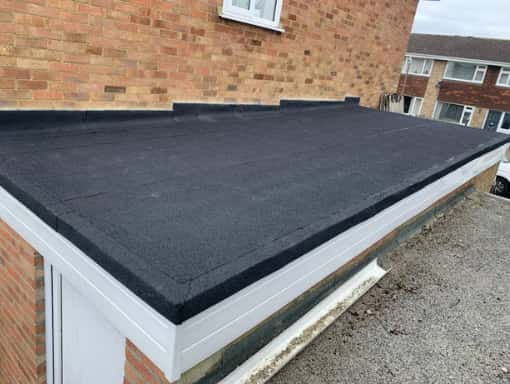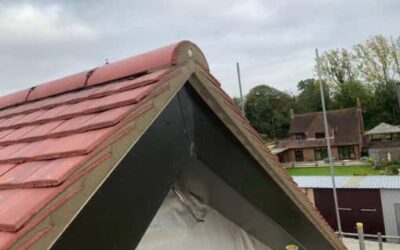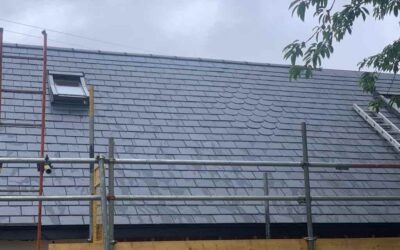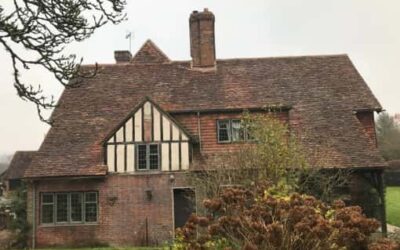For homeowners and property managers alike, the prospect of a flat roof replacement can be daunting. With many materials on the market, each boasting its advantages and challenges, how do you make the right choice? Your flat roof’s legacy depends on it, safeguarding your property for decades. This comprehensive guide sifts through the options, ensuring you’re well-equipped to make an informed decision.
Why the Right Material Matters
Your flat roof is more than just a protective barrier; it’s an investment in the longevity and efficacy of your property. Choosing the wrong material can lead to premature wear, excessive maintenance, and structural issues. Understanding your options in replacement materials is the first step to safeguarding your roof—and your wallet.
But what are these materials? Here’s a detailed breakdown of some of the most popular choices and their various attributes that make them ideal for different situations.
The Classics: Built-Up Roofing (BUR) and Modified Bitumen
Built-Up Roofing (BUR) has been an industry staple for over a century. It’s constructed with asphalt layers alternated with layers of felt. This traditional method provides excellent waterproofing and is cost-effective. Modified Bitumen is an evolution of BUR and offers enhanced flexibility by incorporating a polymer into the Bitumen. This material is ideal for roofs with a low slope and can provide superior durability.
The Modern Marvels: EPDM, TPO, and PVC
Ethylene Propylene Diene Monomer (EPDM), Thermoplastic Olefin (TPO), and Polyvinyl Chloride (PVC) are all modern materials that have grown in popularity over the past few decades.
Thermoplastic Olefin (TPO) for Affordability and Energy Efficiency
TPO roofing has surged in popularity due to its affordability and energy-efficient qualities. Its single-ply membrane reflects UV rays, translating to lower energy costs and a cooler interior. This roofing material is also lightweight, making it an ideal choice for structures that can’t withstand the weight of traditional materials.
Ethylene Propylene Diene Monomer (EPDM) for Simplicity and Resilience
EPDM rubber roofing is cherished for its simplicity and remarkable endurance against the elements. This synthetic rubber offers a straightforward installation process and can withstand extreme weather conditions. EPDM is also highly resistant to punctures, making it a top choice for high-traffic areas and buildings with heavy equipment. The guarantee on EPDM roofing can extend up to 30 years, making it a practical and cost-effective option.
Polyvinyl Chloride (PVC) for Durability and Fire Resistance
PVC roofing is renowned for its durability, fire resistance, and low maintenance requirements. Its heat-welded seams create a watertight seal, making it an excellent choice for commercial buildings with flat roofs. Additionally, PVC is resistant to chemicals and pollutants, ensuring your roof’s longevity.
Metal Roofing for Durability and Versatility
Metal roofs have come a long way from their early days as a practical option. Today’s metal roofing options offer an array of colours and designs, adding style to functionality. In addition to being incredibly durable and low
Polyvinyl Chloride (PVC) for Durability and Versatility
PVC roofing boasts exceptional durability, resistance to chemicals and fire, and flexibility. Its ability to withstand high temperatures makes it ideal for buildings in regions prone to extreme weather conditions. PVC roofing can also be easily customised to fit any roof shape, making it a versatile option for any building.
A Deep Look at Spray Polyurethane Foam (SPF)
SPF is a relatively modern solution known for its impressive insulation properties. It is applied as a liquid and expands into a foam, creating a seamless and resilient protective layer over the roof. SPF, when properly maintained, can provide exceptional durability.
Eco-Friendly Green Roofs and Solar Options
For the environmentally conscious, green roofs, which incorporate live vegetation, offer insulation and contribute to urban sustainability. Solar roof panels, on the other hand, harness the power of the sun to generate energy and are a green energy aficionado’s dream.
Each material shines in its own right, and your choice should be guided by your property’s unique needs, local climate, and budget.
Assessing Your Needs
Before committing to a material, you must assess what your flat roof needs. This involves an inspection by a professional roofing company to determine the extent of damage, understanding the local climate’s impact, and recognising any specific building codes or homeowner association requirements.
Conducting a Thorough Inspection
Safety first—you should hire a professional roofer in Rugby or conduct a thorough, careful inspection yourself. Look for signs of damage, including cracks, leaks, and overall wear. A structural engineer’s input may be necessary to assess the roof’s ability to support heavy materials.
Cost Considerations
The cost of a flat roof replacement isn’t just about the immediate price of the material. You must factor in installation costs, long-term maintenance, and potential energy savings.
Initial Investment
Materials like BUR and EPDM can be quite affordable upfront, while TPO and solar options may have a higher initial cost. Weigh these against the expected lifespan and other financial factors such as insurance premiums.
Long-Term Maintenance
The low maintenance requirements of TPO or the insulating properties of SPF may offer significant savings over time. Consider the projected maintenance costs associated with each material.
Energy Efficiency
Energy-efficient materials like TPO and installing cool roofs can lead to reduced cooling costs and potential tax incentives. Calculate the potential savings to determine the actual long-term costs of each material.
The Aesthetics Factor
Your flat roof’s look can either blend seamlessly with the rest of your property or stand out in stark contrast. Aesthetics should not be overlooked, particularly for properties that require a polished appearance, such as retail spaces or residential buildings.
Architectural Compatibility
Select a material that complements the architectural style of your property. While TPO and EPDM are versatile, materials like metal or green roofs may be more suited to specific styles.
Maintaining the Appeal
Consider how the roof will look on day one and how it will maintain its visual appeal. Materials like metal can be repainted to refresh their look, while SPF or green roofs require specific maintenance to stay attractive.
Duration of Installation
Materials like SPF or green roofs may require more time for preparation and curing. Conversely, TPO or EPDM installations are typically more efficient.
Professional Requirements
Some materials, like metal or SPF, require specialised skillsets for installation. Ensure that the professional roofing contractors you hire are experienced with your chosen material to avoid installation mishaps.
Longevity and Warranties
You want your new flat roof to last, and a robust warranty can provide peace of mind.
Understanding Warranties
Not all warranties are created equal. Be sure to understand the terms and limitations of the warranty for your chosen material. Some may require specific maintenance schedules or limit coverage to certain types of damage.
Environmental Impact
The materials we choose for our flat roofs can have a substantial environmental footprint. Understanding this impact can guide your selection toward a more sustainable choice.
Material Composition
Research the environmental footprint of the materials you’re considering. Some, like SPF, can have a high chemical usage, while others, like metal or green roofs, are more eco-friendly.
Disposal Considerations
When the time comes for a replacement, how easily can the material be disposed of or recycled? EPDM and TPO, for example, are both recyclable and a boon for green initiatives.
Environmental Regulations
Keep an eye on evolving environmental regulations that may influence your available materials. Some areas might incentivise or require the use of specific eco-friendly materials.
Conclusion:
A flat roof replacement is a significant investment with lasting implications for your property. Considering each factor in this guide, you can confidently select the material that provides the best balance of performance, cost, aesthetics, and sustainability. With the suitable material in place, you can rest assured that your flat roof will continue to protect and serve your property for years. Contact us at Rugby Roofing Company for a consultation and a Free quote.



